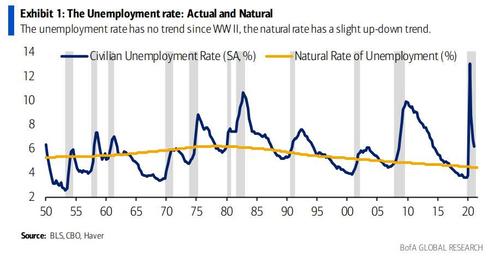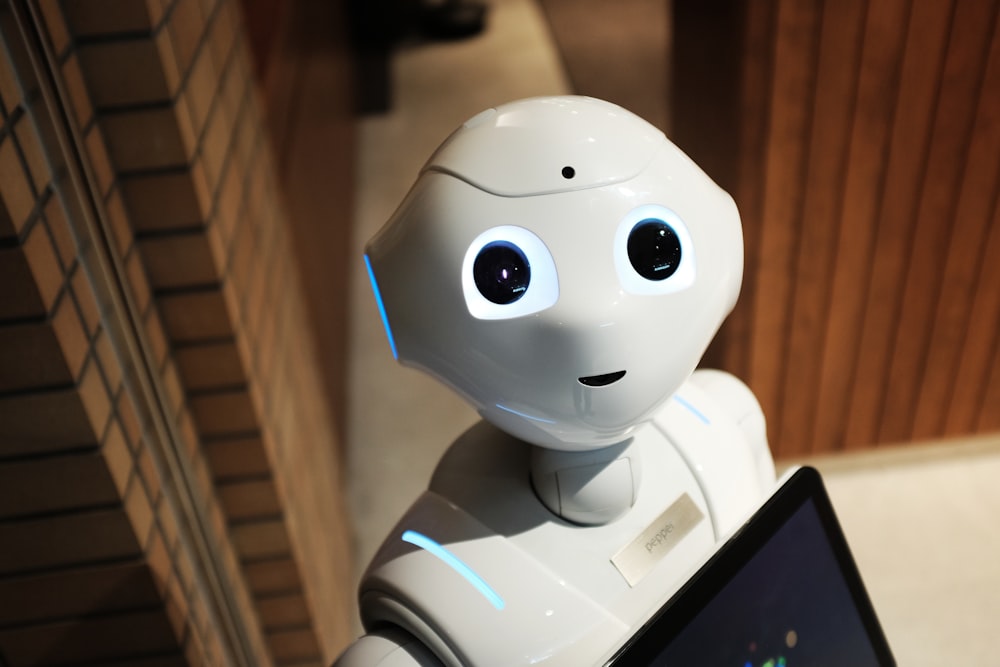If Robots Are Replacing People, Why Is There A Labor Shortage?
After Friday's jobs report, which was the second biggest miss to expectations on record, two seemingly contradictory stories are circulating in capital markets according to BofA's Ethan Harris. One is about relatively widespread labor shortages in the US. The other is about the robotics revolution and machines replacing people. How will this play out?
According to the BofA economist, the short answer to the question above is that we need to be clear about the time frame. While the COVID crisis has likely sped up structural changes in the labor market, these multi-decade changes are much slower than the dynamics of the business cycle. For example, economists from MIT and Boston College estimate that robots could replace two million workers in manufacturing by 2025. That could mean about 400,000 jobs displaced each year. To put that in perspective, BofA expects US job growth to average more than 500,000 per month this year and next.
A look back at history offers some useful insight into how structural changes and labor-saving technology impact the labor market. The most important insight is that the labor market always re-invents itself. There is no trend in the unemployment rate. Over the last 70 years, US productivity has increased almost 400%, while the unemployment rate has bounced around a mean of 5.6%.

However, there are good and bad second-order implications from labor-saving technology. On the negative side:
- Pockets of people tend to be left behind with each wave of innovation, as promises of retraining are rarely fulfilled.
- It also appears that technological advances have contributed to a widening of the income distribution in recent decades.
- And rapid structural changes can create a period of high “frictional unemployment” as people find themselves in the wrong industry with the wrong skills. This is what happened after the oil shocks of the 1970s.
On the positive side:
- Technological advances—in both home “production” and paid production—have dramatically increased leisure hours, a trend that likely continues. This is a huge welfare gain for everyone.
- There have also been instances in which technological change helped lower the unemployment rate. For example, the New Paradigm productivity surge from 1995 to 2005 lowered business costs, delayed the onset of inflation and allowed the Fed to experiment with a very low unemployment rate and rising wages.
Historically, at the peak of the business cycle the unemployment and GDP gaps tend to be proportionate. In this cycle, however, much of the recovery in jobs will be held back. Hence economists expect a bigger (positive) gap for overall GDP than for unemployment. Thus by the end of 2022 BofA estimates a 4.7% output gap, but a smaller -0.9% unemployment gap.
In sum, robots and other labor-saving technology will not prevent a red-hot economy, an almost-as-hot labor market and upward pressure on wages and prices. In other words, BofA's previous forecast for "transitory hyperinflation" is likely to pan out.
Disclosure: Copyright ©2009-2021 ZeroHedge.com/ABC Media, LTD; All Rights Reserved. Zero Hedge is intended for Mature Audiences. Familiarize yourself with our legal and use policies ...
more



